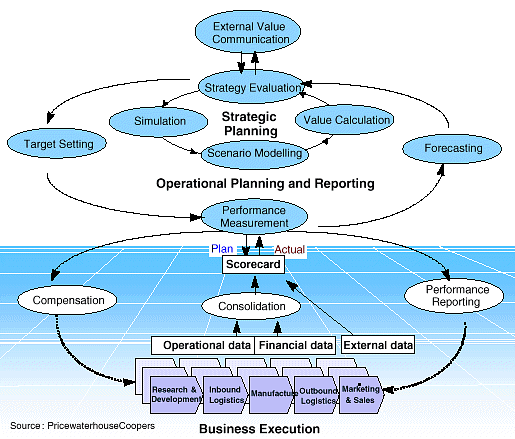Prior to understanding Enterprise Management, let us identify how an enterprise works across processes. An organization is comprised of various departments who work together to achieve the organization’s set goal. The HR department hires professionals and defines their jobs, the payroll department manages the payment structure of employees, the sales department manages the sales and distribution process, the production department manages the inputs and outputs of a production, the finance department handles money involved across departments and so on.
There are marketing teams who handle the promotional and marketing activities of an organization, the IT team handles the information server and security, the development team takes care of the website, the content team generates the content and more.
Thus, there are a host of diverse departments that run an organization. Few of the listed can be eliminated based on the industry, and few are fixed departments within an organization across industries. Individual departments can be handled manually but when it comes to organizing and handling a complete Enterprise Management, things become different.
The task of managing departments at an enterprise level is very complex and the complexity increases along with the organization size. In order to simplify the processes and to manage diverse departmental data and work process, the Enterprise Management solutions (ERP) emerged.
When started, ERP systems were focused to Enterprise Management for bigger organizations but over the years, small and medium size companies too adopted ERP solutions. There are many market leaders providing ERP software development solutions and SAP is one of the pioneers. SAP offers strategic Enterprise Management solutions for different process and areas in enterprises.
What is Strategic Enterprise Management?
SAP Strategic Enterprise Management is a solution that was developed towards building an integrated system to manage diverse processes within an organization. The major goal is to integrate a single unified system to record each move of a department through organizing, planning, executing and controlling processes.
Different Enterprise Management solutions are developed to support different departmental objectives such as HCM in Enterprise Management, SD in Enterprise Management, FI in Enterprise Management and so on. HCM in Enterprise Management involves all the tasks coming under human capital management in the HR. Right from hiring employees to managing the employee’s lifecycle within an organization, everything is handled by this system.
SD in Enterprise Management works towards managing the sales data and distribution details of an organization. On the other hand, FI in Enterprise Management manages the money involved in various departments in an organization. There are more strategic Enterprise Management solutions such as materials management, customer relationship management etc., developed by SAP for enterprises.
The aim behind developing Strategic Enterprise Management is to generate extension to the primary Enterprise Management systems based on in depth work processes such as risk management, strategy planning, performance monitoring, and communications management and so on. SAP Strategic Enterprise Management aims to deliver quick implementation of fresh solutions.
Components of SAP Strategic Enterprise Management
Business Planning and Simulation: One of the reasons behind developing Strategic Enterprise Management solution is to monitor and manage the performance level of an organization. SAP SEM allows simulation tools to track business performance that helps in future planning and simulation of businesses.
Business Consolidation: This enables functionality for legally required consolidation by a particular organization. However, management consolidations can be based on diverse organizational units and roles.
Business Information Collection: This enables a department to collect detailed business information. Tiny details of each process can be tracked and recorded in a unified system that enhances future reference and work management.
Corporate Performance Monitor: As the term suggests, it is about monitoring the performance of corporate solutions. The best practice under the corporate performance monitor is using a feedback form from business execution systems to measure the performance level.
Stakeholder Relationship Management: Success of a project lies in strong and clear interaction between all the stakeholders. The SAP SEM system enables the managing of a unified interacting system where every stakeholders group participates and are aware of movements within organizations.
Thus, SAP Strategic Enterprise Management makes sure that the performance of a business is measured using different methods based on which the future business plan is strategically built. Thus SAP Strategic Enterprise Management is an effective way to strengthen IT infrastructure to maximize business performance.
